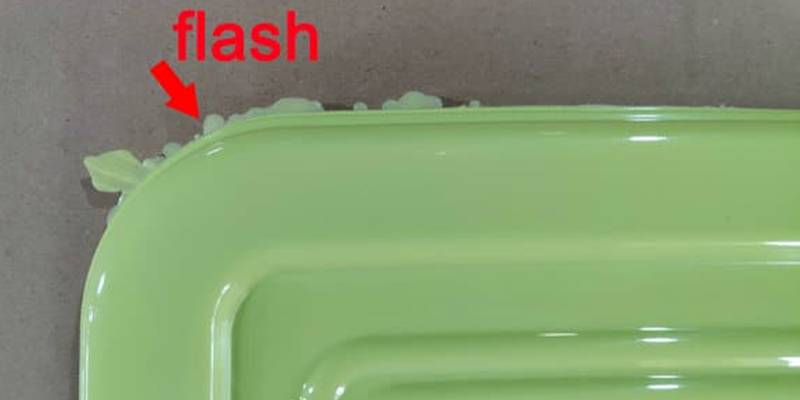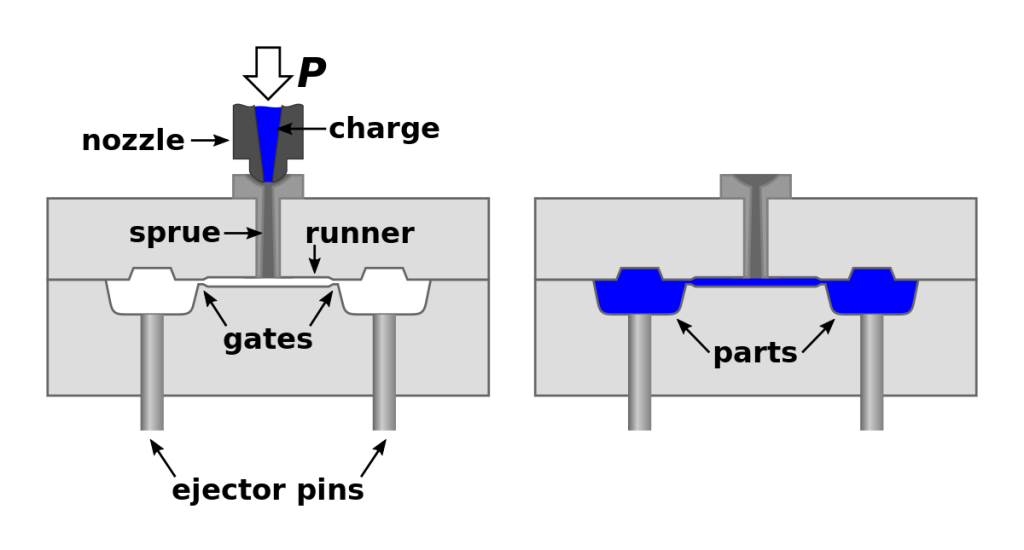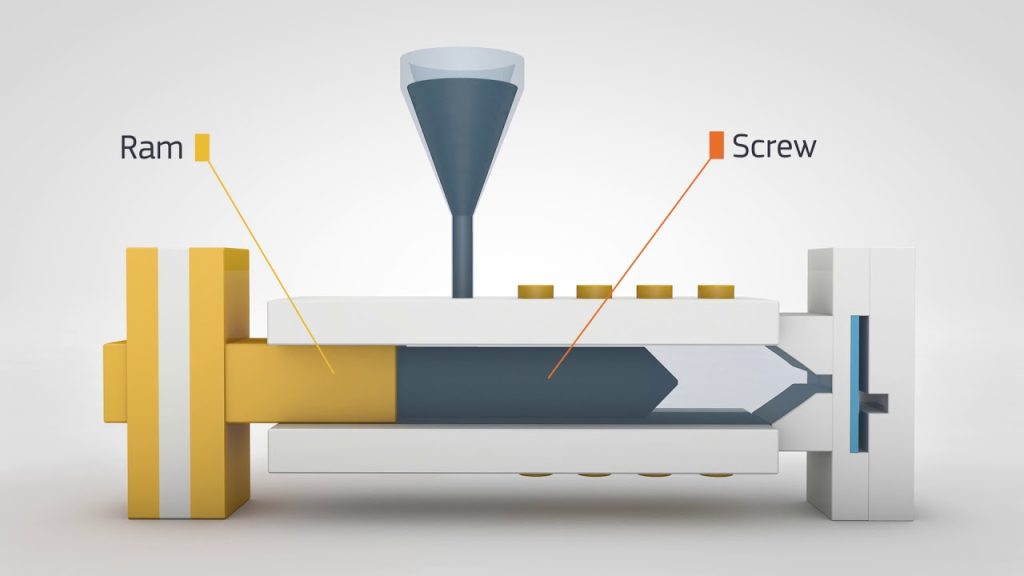Table of Contents
Introduction:
Injection molding is a widely used manufacturing process that involves injecting a molten material into a mold to form a desired shape. However, one of the most common issues that arise during injection molding is the appearance of flash, which is an excess material that protrudes from the parting line of the mold.
Flash can significantly affect the quality and functionality of the finished product, and can also lead to increased production time and costs. In this article, we will discuss some tips and techniques on how to avoid flash in injection molding, and ensure that your products are of the highest quality.
- Use the right injection molding machine that is appropriate for the material being used.
- Ensure that the injection mold cavity is properly designed and maintained.
- Optimize the injection molding process parameters like the injection speed, pressure, and temperature.
- Use a high-quality mold release agent to prevent the material from sticking to the mold.
- Incorporate vents in the mold design to allow the air to escape and prevent the formation of flash.
How to Avoid Flash in Injection Molding?
Flash in injection molding is a common issue that can lead to defects in the final product. Flash occurs when molten plastic escapes from the mold cavity and creates thin, unwanted extensions on the part. These extensions can affect the accuracy and quality of the part, and may even cause the part to fail. In this article, we’ll discuss some tips on how to avoid flash in injection molding.
1. Optimize the Injection Molding Process
To avoid flash, it’s important to optimize the injection molding process. This includes adjusting the temperature, pressure, and speed of the injection molding machine to ensure that the plastic flows smoothly into the mold cavity. Additionally, using the right type of plastic and mold design can also help to prevent flash.
One way to optimize the injection molding process is to use a computer-aided design (CAD) system. This system can help to simulate the injection molding process and identify potential issues before production begins. By optimizing the injection molding process, you can reduce the risk of flash and produce higher quality parts.
2. Use the Right Mold Design
The mold design is also an important factor in preventing flash. The mold should be designed with proper venting to allow air to escape from the mold cavity as the plastic is injected. This will help to prevent air pockets from forming, which can lead to flash.
Additionally, the mold should be designed with the right gate size and location. The gate is the point where the plastic enters the mold cavity, and the size and location of the gate can affect the flow of the plastic. By using the right gate size and location, you can ensure that the plastic flows smoothly into the mold cavity, reducing the risk of flash.
3. Maintain the Injection Molding Machine
Regular maintenance of the injection molding machine is also important in preventing flash. This includes cleaning the machine regularly to remove any debris or contaminants that can affect the flow of the plastic. Additionally, replacing worn or damaged parts can help to ensure that the machine is operating properly.
It’s also important to monitor the injection molding machine during production to identify any issues that may lead to flash. By catching potential issues early, you can prevent flash and produce higher quality parts.
4. Use the Right Type of Plastic
The type of plastic used in injection molding can also affect the risk of flash. Some plastics are more prone to flash than others, so it’s important to choose the right type of plastic for the application.
Additionally, the temperature at which the plastic is melted can also affect the risk of flash. By using the right type of plastic and melting it at the right temperature, you can reduce the risk of flash and produce higher quality parts.
5. Properly Train Injection Molding Operators
Properly training injection molding operators is also important in preventing flash. Operators should be trained on the proper injection molding techniques, including adjusting the temperature, pressure, and speed of the machine. They should also be trained on how to identify potential issues that may lead to flash and how to address them.
By properly training injection molding operators, you can reduce the risk of flash and produce higher quality parts.
6. Monitor the Injection Molding Process
Monitoring the injection molding process during production is also important in preventing flash. This includes monitoring the temperature, pressure, and speed of the injection molding machine, as well as the flow of the plastic into the mold cavity.
Additionally, monitoring the part quality during production can help to identify any issues that may lead to flash. By monitoring the injection molding process, you can catch potential issues early and prevent flash.
7. Use the Right Injection Molding Machine
Using the right injection molding machine is also important in preventing flash. The machine should be capable of producing the required part with the right level of precision and accuracy. Additionally, the machine should be able to adjust the temperature, pressure, and speed of the injection molding process to optimize the production process.
By using the right injection molding machine, you can reduce the risk of flash and produce higher quality parts.
8. Avoid Overpacking the Mold
Overpacking the mold is another common cause of flash. This occurs when too much plastic is injected into the mold cavity, causing the plastic to seep out and create flash.
To avoid overpacking the mold, it’s important to use the right amount of plastic and to monitor the injection molding process during production. By avoiding overpacking the mold, you can reduce the risk of flash and produce higher quality parts.
9. Use the Right Injection Molding Material
Using the right injection molding material is also important in preventing flash. The material should be able to flow smoothly into the mold cavity and should be able to withstand the temperature and pressure of the injection molding process.
Additionally, the material should be able to maintain its shape and integrity during the cooling process. By using the right injection molding material, you can reduce the risk of flash and produce higher quality parts.
10. Benefits of Avoiding Flash in Injection Molding
Avoiding flash in injection molding has several benefits. First, it can help to improve the quality and accuracy of the final product. Flash can cause defects and inaccuracies in the part, which can affect its performance and durability.
Additionally, avoiding flash can help to reduce waste and production costs. Flash can lead to the production of defective parts, which may need to be scrapped or reworked. By avoiding flash, you can reduce the amount of waste produced and improve the efficiency of the production process.
In conclusion, flash in injection molding is a common issue that can affect the quality and accuracy of the final product. By optimizing the injection molding process, using the right mold design, maintaining the injection molding machine, using the right type of plastic, properly training injection molding operators, monitoring the injection molding process, using the right injection molding machine, avoiding overpacking the mold, and using the right injection molding material, you can reduce the risk of flash and produce higher quality parts.
Frequently Asked Questions
Injection molding is a manufacturing process that produces high-quality plastic parts. However, flash is a common issue that can occur during the process. Flash is excess material that flows out of the mold and can affect the quality of the finished product. Here are some frequently asked questions and answers about how to avoid flash in injection molding.
What causes flash in injection molding?
Flash can occur when there is too much pressure or too much material in the mold. Other factors that can contribute to flash include poor mold design, worn-out molds, and poor machine maintenance. High temperatures can also cause flash by melting the plastic material too quickly. In some cases, the material itself may be the cause of flash, especially if it is a low-quality or inconsistent material.
To prevent flash, it is important to ensure that the mold is properly designed and maintained, and that the machine is operating at the correct settings. Using high-quality materials can also help prevent flash by providing consistent results. Regular inspections and maintenance of the machine and mold can help catch any issues early on and prevent flash from occurring.
What are some ways to prevent flash in injection molding?
There are several ways to prevent flash from occurring in injection molding. First, it is important to use a mold that is properly designed for the part being produced. The mold should be designed to minimize the amount of excess material that can flow out and cause flash. Second, the machine should be set up properly to ensure that the correct amount of material is being used and that the pressure is not too high. Third, regular maintenance of the machine and mold can help prevent issues that can cause flash, such as worn-out or damaged parts.
Finally, using high-quality materials can help prevent flash by providing consistent results. Low-quality or inconsistent materials can cause variations in the process and lead to flash. It is important to work with a supplier who provides high-quality materials that are consistent and reliable.
How can flash be detected in injection molding?
Flash can be detected during the inspection process by looking for excess material on the part or around the edges of the mold. Flash can also cause the part to be out of tolerance or not meet the required specifications. Visual inspection of the part can often detect flash, but more advanced methods such as X-ray or ultrasound may be needed to detect flash that is not visible to the naked eye.
To prevent flash from occurring, it is important to perform regular inspections and catch any issues early on. This can help prevent the need for more advanced detection methods and ensure that the finished product meets the required specifications.
How does the mold design affect flash in injection molding?
The mold design can have a significant impact on the amount of flash that occurs in injection molding. A poorly designed mold can allow excess material to flow out and cause flash. A mold that is designed with the proper amount of space for the material can help minimize the amount of excess material that flows out and prevent flash.
The mold should also be designed to allow for easy removal of the part without causing excess material to be pushed out. A good mold design can help prevent flash and ensure that the finished product meets the required specifications. Regular inspections and maintenance of the mold can help identify any issues with the design that may be contributing to flash.
What are the consequences of flash in injection molding?
Flash can have several consequences in injection molding. First, it can affect the quality of the finished product by causing variations in the dimensions or surface finish. Second, it can cause the part to be out of tolerance or not meet the required specifications. Third, it can increase the amount of material that is wasted, which can increase the cost of production. Finally, flash can lead to increased downtime for cleaning and maintenance, which can further increase the cost of production.
To prevent the consequences of flash, it is important to take steps to prevent it from occurring in the first place. This includes using a properly designed mold, using high-quality materials, setting up the machine correctly, and performing regular inspections and maintenance.
In conclusion, avoiding flash in injection molding is crucial to achieving high-quality products. By taking the necessary steps, such as adjusting the temperature and pressure settings, removing excess materials, and using proper tooling techniques, manufacturers can reduce or eliminate flash. This not only ensures the product’s aesthetic appeal but also enhances its functionality and durability.
Furthermore, it is important to note that avoiding flash is not a one-time task. It requires constant monitoring and adjustments throughout the production process to maintain consistency and minimize waste. By prioritizing quality control measures and investing in reliable equipment, manufacturers can significantly reduce the occurrence of flash and optimize their production efficiency.
Ultimately, the benefits of avoiding flash in injection molding go beyond just the physical appearance of the product. It can lead to increased customer satisfaction, reduced material waste, and improved profitability. By following these guidelines and staying up to date on the latest industry trends and technologies, manufacturers can set themselves apart from the competition and achieve long-term success.
Request a quote today!
[contact-form-7 id="1578" title="Contact form"]
Please compress the file into a ZIP or RAR file before uploading. Alternatively, send through your RFQ by email.
enquires@unitymanufacture.com





